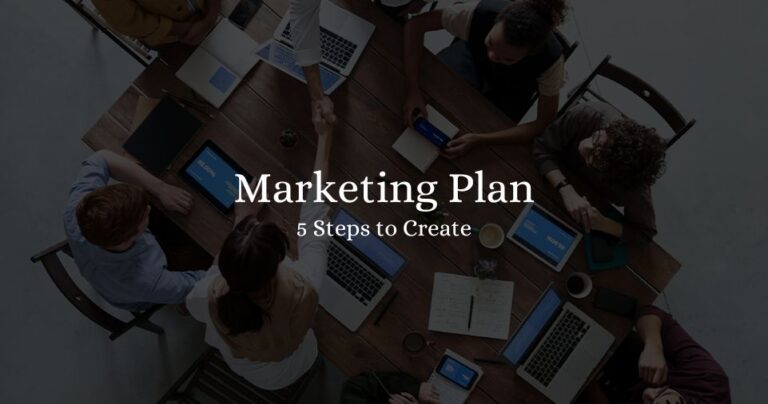Extremely Productive Sales Conversations The 4 Step Process
Are you tired of engaging in sales conversations that seem to go nowhere? Do you find yourself struggling to close deals and maximize your sales potential? If so, you’re not alone. Many professionals face challenges when it comes to having productive sales conversations that lead to successful outcomes. However, fret not! In this blog post, we will delve into the 4-step process that will revolutionize your sales conversations and help you achieve extraordinary results.
Before we dive into the solution, it’s important to acknowledge the problem at hand. In today’s fast-paced business environment, sales professionals often encounter hurdles during their conversations with potential clients. These challenges can range from difficulty in establishing rapport and understanding client needs to overcoming objections and ultimately closing the deal. These stumbling blocks can hinder your sales success and leave you feeling frustrated and unfulfilled.
But fear not, for we have the solution you’ve been seeking! Our 4-step process for extremely productive sales conversations will equip you with the tools and strategies necessary to overcome these challenges and achieve remarkable results. Whether you’re a seasoned sales veteran or new to the world of selling, this comprehensive framework will provide you with the insights and techniques you need to take your sales conversations to the next level.
Let’s take a sneak peek at what our 4-step process entails. First, we will explore the art of building rapport and establishing a genuine connection with your prospects. Next, we’ll dive into the crucial step of uncovering and understanding your client’s needs, allowing you to tailor your approach and offer solutions that truly resonate. Then, we’ll tackle the art of overcoming objections, equipping you with strategies to address concerns effectively and build trust. Finally, we’ll reveal the secrets to closing deals with finesse and securing those coveted sales.
Imagine the satisfaction of engaging in sales conversations that flow seamlessly, where both you and your prospects feel heard, understood, and excited about the possibilities. Picture yourself effortlessly addressing objections and confidently closing deals, all while building long-lasting relationships with your clients. By implementing our 4-step process, you can bid farewell to unproductive conversations and hello to a world of sales success.
Throughout this blog post, we will delve into the intricacies of sales conversation techniques and strategies to help you enhance your productivity and achieve exceptional results. So, let’s dive right in and uncover the secrets of mastering the art of sales conversation.
1. Building Rapport: The Foundation of Productive Sales Conversations
In the world of sales, building rapport is the bedrock upon which successful and productive conversations are built. It lays the groundwork for establishing trust, fostering a genuine connection, and ultimately, increasing the likelihood of closing deals. Rapport goes beyond merely exchanging pleasantries; it involves creating a sense of understanding, empathy, and mutual respect between you and your prospects.
To truly appreciate the importance of building rapport, imagine yourself walking into a store and being greeted by a salesperson who barely acknowledges your presence. Their disinterest is palpable, and you can’t help but feel like just another customer. Now, contrast that with an experience where a salesperson warmly welcomes you, engages in meaningful conversation, and demonstrates a genuine interest in helping you find the right solution. The difference is striking, isn’t it?
Establishing a genuine connection with your prospects begins with effective communication and active listening. When engaging in a sales conversation, it’s essential to be attentive and responsive. Show genuine interest in what your prospects have to say, and ask open-ended questions that encourage them to share more about their needs, challenges, and aspirations.
For example, instead of asking a closed-ended question like, “Do you need help with your marketing strategy?” try asking an open-ended question like, “What are your main marketing goals, and what challenges are you currently facing in achieving them?” This approach allows your prospects to provide you with valuable insights, enabling you to tailor your solutions to their specific needs.
Utilizing empathy is another powerful tool in establishing rapport. Put yourself in your prospects’ shoes and seek to understand their perspective. Empathy shows that you genuinely care about their challenges and are invested in finding the best solution for them. When prospects feel understood and supported, they are more likely to trust your recommendations and consider your offerings.
Let’s consider an analogy to illustrate the power of rapport in sales conversations. Think of rapport as the foundation of a sturdy bridge. Without a solid foundation, the bridge would be shaky and unreliable. Similarly, without rapport, your sales conversations lack a solid footing, making it difficult to establish trust and effectively convey the value of your product or service.
Building rapport is not a one-size-fits-all approach. It requires adapting to the unique preferences and communication styles of each prospect. Some prospects may prefer a more formal and business-like conversation, while others may appreciate a more casual and friendly approach. By being adaptable and flexible in your communication style, you can establish a connection that resonates with your prospects and makes them comfortable engaging in a meaningful conversation with you.
2. Uncovering Client Needs: Tailoring Solutions for Success

In any sales conversation, understanding your client’s needs is paramount. Without a clear understanding of their challenges, goals, and pain points, it becomes nearly impossible to provide tailored solutions that resonate with them. By uncovering their needs, you can position your product or service as the perfect fit, addressing their specific requirements and delivering value that exceeds their expectations.
To effectively uncover client needs, strategic questioning and active listening are invaluable skills to possess. Rather than jumping straight into a sales pitch, take the time to ask thoughtful and probing questions that encourage your clients to share valuable insights. Open-ended questions are particularly useful as they encourage clients to provide detailed responses, giving you a deeper understanding of their needs.
For instance, instead of asking, “Are you satisfied with your current software provider?” try asking, “What are the key challenges you face with your current software provider, and how do these challenges impact your business operations?” This approach allows your clients to express their pain points and frustrations, enabling you to align your solutions accordingly.
Active listening is equally important. It involves not only hearing what your clients say but also paying attention to their tone, body language, and underlying emotions. By demonstrating that you are fully engaged and genuinely interested in their concerns, you create a positive impression and build rapport. Additionally, active listening allows you to pick up on subtle cues that may provide further insights into their needs.
Identifying and addressing pain points is a critical component of tailoring solutions for success. Pain points are the specific challenges and obstacles that your clients face and wish to overcome. By understanding these pain points, you can position your product or service as the solution that directly addresses their issues and provides tangible benefits. For example, if you’re selling productivity software, you might highlight how your software streamlines workflows, reduces manual errors, and improves overall efficiency, addressing the pain points of time-consuming tasks and inefficiencies.
Tailoring your pitch and value proposition is the next step in uncovering client needs. Based on the insights you’ve gathered, customize your sales approach to align with the specific needs and goals of your clients. Highlight the unique features and benefits of your product or service that directly address their pain points and provide a clear value proposition. By demonstrating how your offering solves their challenges and delivers tangible results, you increase the likelihood of capturing their interest and moving closer to a successful sale.
Real-life scenarios and case studies serve as powerful tools to illustrate the impact of client-focused conversations. Sharing success stories of how you’ve helped previous clients overcome similar challenges can inspire confidence and demonstrate the practical value of your solutions. Consider including relevant case studies or testimonials that showcase the positive outcomes achieved through your tailored approach. These real-world examples provide tangible proof that your product or service can make a difference, further strengthening your position in the sales conversation.
3. Overcoming Objections: Addressing Concerns and Building Trust
In the world of sales, objections are an inevitable part of the conversation. Prospects may have concerns, hesitations, or doubts that need to be addressed before they can fully commit to a purchase. Instead of viewing objections as roadblocks, skilled sales professionals see them as opportunities to build trust and credibility. By effectively handling objections, you can alleviate concerns, provide reassurance, and guide prospects towards a positive decision.
To overcome objections, it’s crucial to understand their underlying motivations. Objections often arise from a place of uncertainty or fear. Common objections include concerns about cost, competition, implementation challenges, or doubts about the value and fit of the product or service. By identifying the root cause of objections, you can tailor your responses to directly address those concerns and provide the necessary information or solutions.
When handling objections, employ strategies that demonstrate confidence and expertise. Respond with empathy and active listening to show that you genuinely understand and respect the prospect’s concerns. Offer relevant information, testimonials, or case studies that validate the value and effectiveness of your offering. Provide clear explanations and address objections directly, ensuring your responses are concise, credible, and persuasive.
Turning objections into opportunities requires reframing the objection as a chance to provide additional value or showcase unique features. For example, if a prospect raises a concern about the price, you can emphasize the long-term cost savings, return on investment, or additional services included that outweigh the initial investment. By reframing objections in a positive light, you demonstrate flexibility and reinforce the prospect’s confidence in your ability to meet their needs.
Effectively handling objections is not only about addressing concerns but also about building trust and credibility. Prospects want to feel confident in their decision and trust that you have their best interests at heart. Use every objection as an opportunity to provide transparent information, demonstrate your knowledge and expertise, and showcase your commitment to customer satisfaction. By doing so, you foster trust, differentiate yourself from competitors, and increase the likelihood of closing the sale.
Here are some practical tips for handling objections in sales conversations:
- Be prepared: Anticipate common objections and have well-crafted responses ready. Research your prospects’ industry, pain points, and potential objections to ensure you can address them effectively.
- Active listening: Pay close attention to the prospect’s objections and ask clarifying questions to fully understand their concerns. This shows that you value their input and are genuinely interested in finding the right solution for them.
- Empathize and validate: Show empathy towards the prospect’s concerns and validate their perspective. Acknowledge their objections and reassure them that their concerns are valid and important.
- Provide evidence: Back up your claims with relevant evidence, such as case studies, testimonials, or data. Concrete proof can help alleviate doubts and build trust in the effectiveness of your product or service.
- Offer alternatives: If the prospect’s objection is valid, explore alternative solutions or options that address their concerns. This demonstrates flexibility and a willingness to work collaboratively to find the best fit.
Remember, objection handling is not about winning an argument; it’s about building a mutually beneficial relationship based on trust and understanding. By handling objections with finesse, you can turn skeptical prospects into satisfied customers and advocates for your brand.
4. Closing Deals: Sealing the Deal with Finesse

When it comes to sales conversations, closing the deal is the ultimate goal. The art of the close requires finesse, persuasive skills, and an understanding of the prospect’s needs and motivations. It’s the culmination of a well-executed sales conversation where you’ve built rapport, uncovered client needs, and addressed objections. Mastering the art of closing is essential for sales success.
First and foremost, recognize the importance of the close in sales conversations. It’s the moment where the prospect makes the decision to move forward with your product or service. A strong close not only leads to a successful sale but also solidifies the relationship with the client, paving the way for future opportunities and referrals.
Different closing techniques can be employed depending on the context and the prospect’s buying behavior. Some common closing techniques include the assumptive close, where you assume the prospect’s agreement and move forward with next steps, and the alternative close, where you present the prospect with two options, both of which lead to a positive outcome. Other techniques include the summary close, where you recap the benefits and agreement points, and the time-based close, where you create a sense of urgency by emphasizing limited-time offers or discounts.
Overcoming final objections is often the last hurdle before securing commitment. By this stage, most concerns have been addressed, but a few lingering doubts may still remain. Address these objections with confidence and provide additional reassurance or information as needed. Show empathy and understanding while reinforcing the value and benefits the prospect will gain by choosing your product or service.
Creating a sense of urgency and leveraging scarcity can be effective closing strategies. By highlighting limited availability, exclusive offers, or time-sensitive benefits, you encourage the prospect to make a decision sooner rather than later. This can help overcome procrastination or indecision, nudging the prospect towards a commitment.
Success stories and expert insights are valuable resources for mastering the art of closing. Learn from the experiences of successful sales professionals and industry experts. Study their approaches, techniques, and mindset. Incorporate their insights into your own strategies, adapting them to fit your unique selling style and the specific needs of your prospects.
Remember, the art of the close is not about pressuring or manipulating the prospect. It’s about guiding them towards a decision that aligns with their needs and objectives. Approach the close with sincerity, authenticity, and a genuine desire to help the prospect achieve their goals. Building trust and rapport throughout the sales conversation lays the foundation for a smooth and successful closing process.
May Also Like Reading: 7 Secrets to Steal from a Home Goods Super Shopper
Conclusion
In this comprehensive guide, we’ve explored the key elements of productive sales conversations. From building rapport to uncovering client needs, overcoming objections, and sealing the deal with finesse, each step plays a vital role in achieving sales success. By following the 4-step process outlined in this article, you can enhance your sales conversations and increase your chances of closing deals.
Recapping the process, it starts with building rapport, establishing a genuine connection with your prospects. This lays the foundation for trust and open communication. Next, uncovering client needs allows you to tailor your solutions and demonstrate the value you can provide. Understanding objections and handling them confidently is crucial for building trust and credibility. Finally, mastering the art of closing ensures that you can guide prospects towards a positive decision and secure commitments.
As you implement the strategies discussed, remember the importance of continuous improvement. Sales conversations are dynamic and ever-evolving, so it’s essential to adapt, learn from each interaction, and refine your approach. By continuously honing your skills, staying updated on industry trends, and seeking expert insights, you’ll elevate your sales conversations to new heights.
Now, armed with the knowledge and techniques shared in this article, it’s time to put them into practice. Take action, engage in meaningful conversations, and embrace the opportunity to connect with your prospects on a deeper level. By applying these strategies consistently, you’ll not only enhance your sales performance but also build long-lasting relationships with your clients.
Are you ready to take your sales conversations to the next level? Start implementing these strategies today and experience the positive impact they can have on your success.
FAQs
Q1: How long does it take to build rapport in a sales conversation?
A1: Building rapport is a continuous process that starts from the first interaction and develops over time. It can vary depending on the individuals involved, the nature of the sale, and the level of trust established. However, by actively listening, showing genuine interest, and finding common ground, you can begin building rapport within minutes.
Q2: How do I handle objections effectively?
A2: Handling objections effectively involves active listening, empathizing with the prospect’s concerns, and providing relevant information or solutions. Address objections directly, offer evidence to support your claims, and reframe objections as opportunities to provide additional value. Practice handling objections through role-playing or reviewing real-world examples to improve your skills.
Q3: What are some effective closing techniques?
A3: Effective closing techniques include the assumptive close, where you assume the prospect’s agreement and proceed with next steps, and the alternative close, where you present the prospect with two favorable options. Other techniques include the summary close, where you recap the benefits and agreement points, and the time-based close, where you create a sense of urgency. The choice of technique depends on the prospect’s buying behavior and the context of the conversation.
Q4: How can I create a sense of urgency without being pushy?
A4: Creating a sense of urgency involves highlighting time-sensitive benefits or limited availability. Instead of being pushy, emphasize the value and benefits that the prospect would miss out on if they delay their decision. Present the urgency as an opportunity for them to take advantage of something special or to avoid potential price increases or product unavailability in the future.






